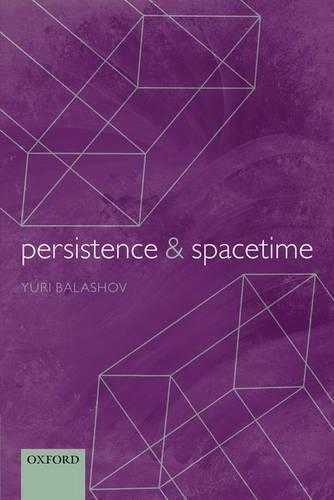Overview
Material objects persist through time and survive change. How do they manage to do so? What are the underlying facts of persistence? Do objects persist by being ""wholly present"" at all moments of time at which they exist? Or do they persist by having distinct ""temporal segments"" confined to the corresponding times? Are objects three-dimensional entities extended in space, but not in time? Or are they four-dimensional spacetime ""worms""? These are matters of intense debate, which is now driven by concerns about two major issues in fundamental ontology: parthood and location. It is in this context that broadly empirical considerations are increasingly brought to bear on the debate about persistence. Persistence and Spacetime pursues this empirically based approach to the questions. Yuri Balashov begins by setting out major rival views of persistence -- endurance, perdurance, and exdurance -- in a spacetime framework and proceeds to investigate the implications of Einstein's theory of relativity for the debate about persistence. His overall conclusion -- that relativistic considerations favour four-dimensionalism over three-dimensionalism -- is hardly surprising. It is, however, anything but trivial. Contrary to a common misconception, there is no straightforward argument from relativity to four-dimensionalism. The issues involved are complex, and the debate is closely entangled with a number of other philosophical disputes, including those about the nature and ontology of time, parts and wholes, material constitution, causation and properties, and vagueness.
Full Product Details
Author: Yuri Balashov (University of Georgia)
Publisher: Oxford University Press
Imprint: Oxford University Press
Dimensions:
Width: 15.60cm
, Height: 1.40cm
, Length: 23.50cm
Weight: 0.362kg
ISBN: 9780199679652
ISBN 10: 0199679657
Pages: 248
Publication Date: 11 April 2013
Audience:
College/higher education
,
Postgraduate, Research & Scholarly
Format: Paperback
Publisher's Status: Active
Availability: To order

Stock availability from the supplier is unknown. We will order it for you and ship this item to you once it is received by us.
Reviews
Persistence and Spacetime is a wonderful example of how metaphysics and physics can combine forces to teach us the nature of spacetime and its denizens. Ted Sider, Cornell University a powerful and sophisticated set of arguments from relativistic physics to a four-dimensionalist metaphysics of persisting objects. The book is extremely lucid, fair, and original throughout. It also contains an exceptionally clear and reader-friendly introduction to the relevant chunks of physics, so new-comers to relativity theory should find it accessible and engaging. Anyone with an interest in the metaphysics of material objects must come to terms with Balashov's arguments. Persistence and Spacetime is likely to be a major source of ideas and fruitful debate for many years to come. Cody Gilmore, University of California, Davis Balashov's engagement with both physics and metaphysics provides a model for how ontological enquiry ought to proceed. Antony Eagle, Notre Dame Philosophical Reviews a great resource for graduate seminars and for those working on persistence. Carolyn Brighouse, Metascience a great source of insights into the relation among science, common sense and philosophy ... Balashov has set the agenda of the persistence debate. Lorenzo del Savio, Humana Mente
Author Information
Yuri Balashov is Professor of Philosophy at the University of Georgia, US. His current interests are in analytic ontology and philosophy of time. He has published extensively in major philosophy journals, such as Noûs, Philosophical Studies, American Philosophical Quarterly, Australasian Journal of Philosophy, Philosophical Quarterly, The Monist, and British Journal for the Philosophy of Science and is a co-editor of Einstein Studies in Russia (Birkhäuser, 2002) and Philosophy of Science: Contemporary Readings (Routledge, 2002).




